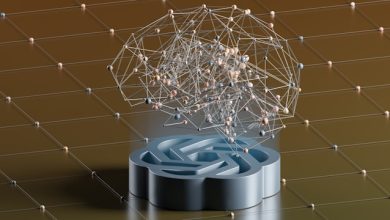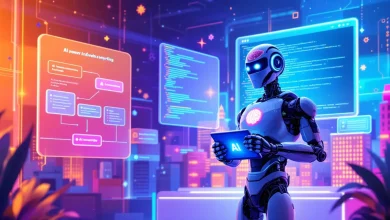
Artificial intelligence has redrawn the battlefield of cybersecurity. In healthcare, where the stakes include patient safety, payment integrity, and public trust, AI is both the sharpest shield and the sharpest sword. Defenders are deploying it to shrink dwell times and orchestrate recovery in days instead of weeks. But adversaries are weaponizing the same technologies to create phishing campaigns indistinguishable from reality, generate exploits at machine speed, and impersonate trusted voices with synthetic media.
The paradox is clear: AI amplifies intent—magnifying the capabilities of those who seek to protect, and those who seek to destroy.
Healthcare’s Unique Risk Surface
No sector is more exposed than healthcare. In 2024 alone, more than 276 million records were compromised—representing nearly 81% of the U.S. population. The February 2024 attack on a major clearinghouse halted transactions across the country, paralyzing providers and delaying care. In an environment this interconnected, downtime isn’t just a financial loss; it is a clinical risk.
AI for Defense
On the defensive side, AI has become indispensable. It enables teams to detect anomalies across petabytes of access and traffic data, filtering out the noise and surfacing the signals that truly matter. It automates triage, accelerates response, and allows security analysts to focus on the highest-risk alerts rather than drowning in false positives. AI-driven tools can also classify and tag sensitive data at scale, ensuring that appropriate protections are applied consistently without overwhelming users.
Beyond detection and prevention, AI powers realistic breach simulations that move beyond tabletop exercises, enabling CISOs to validate recovery readiness under conditions that mimic real-world threats. When combined with resilience strategies, AI transforms cybersecurity from a compliance checkbox into a continuity plan. In this model, AI doesn’t just help organizations avoid breaches; it ensures they can bounce back from them quickly and effectively.
AI for Attack
Yet the same innovations that strengthen defenses are being exploited by adversaries. Breach data now feeds chatbots capable of answering knowledge-based access questions with unsettling accuracy. Generative AI tools refine phishing campaigns, eliminating the telltale grammar mistakes that once signaled fraud. Hackers are turning to AI coding assistants to generate exploits or malware variants on demand, while deepfakes and voice clones are used to impersonate trusted executives in payer–provider communications, threatening to erode trust at scale.
AI has opened a whole new capability in terms of speed to market. Attackers no longer need to write the code themselves. They can generate it, package it, and deliver it faster than most defenses can adapt.
What CISOs Must Do
This dual-use reality presents a dilemma. Automation that accelerates recovery can just as easily accelerate ransomware propagation. AI that helps filter false positives can be manipulated to hide malicious behavior. The technology itself is neutral. Its impact depends entirely on the intent of the people who wield it.
Prevention alone is no longer sufficient. Healthcare CISOs must shift their focus toward resilience and governance. That begins with assuming breach and designing for rapid recovery, using independently validated plans, redundant backups, and regularly tested failover procedures.
It also requires aligning with frameworks such as NIST’s AI Risk Management Framework and CISA’s emerging AI guidance to ensure AI systems are deployed responsibly. Scrutinizing vendors is another essential step—demanding transparency, explainability, and real-world testing rather than black-box assurances.
Equally important is maintaining independent, secure communications channels during crises to preserve trust when systems are compromised. And finally, CISOs must educate their boards, building clear business cases and governance plans that frame AI not just as a tool but as a risk multiplier requiring disciplined oversight.
Establishing safe AI practices internally. The CISO’s responsibilities extend beyond defending the perimeter. They must also guide how AI is introduced and used safely within their own organizations. Deploying tools such as large language models (LLMs) or agentic AI systems requires a deliberate foundation of staff training and a well-defined governance strategy.
This is not only to protect proprietary information, although the risks are real; for example, an agentic model could quickly identify documents that contain usernames or passwords if safeguards are not in place.
CISOs, working in collaboration with legal teams and executive leadership, must set clear standards for what data can be shared with AI systems, how those systems can interact with internal networks, and how usage is monitored and audited over time. Building this culture of literacy and accountability ensures that AI enhances productivity without compromising security.
Vetting external AI partnerships. As AI becomes embedded in more enterprise platforms and third-party solutions, CISOs must also increase their vigilance in evaluating technology partners. Security due diligence now extends beyond traditional penetration testing and data handling assessments to include a deep understanding of how vendors train, deploy, and govern their AI models.
- Are they using customer data for model improvement?
- Do they provide transparency into model decision-making?
- Can their systems be explained and independently validated?
The answers to these questions should directly influence purchasing decisions and contractual agreements. In this era, trust is not just about encryption or uptime; it’s about understanding the entire AI supply chain and ensuring that every partner’s practices align with the organization’s own standards for safety and responsibility.
AI will not eliminate risk. It will redefine it. The organizations that thrive in this new era will be those that embrace the dual-use dilemma head on, embedding resilience into their operations and holding every partner in their ecosystem accountable.
For healthcare, the question is no longer if systems will go down, but how quickly they can come back up. In this landscape, recovery speed is resilience, and resilience is the only path to trust.




